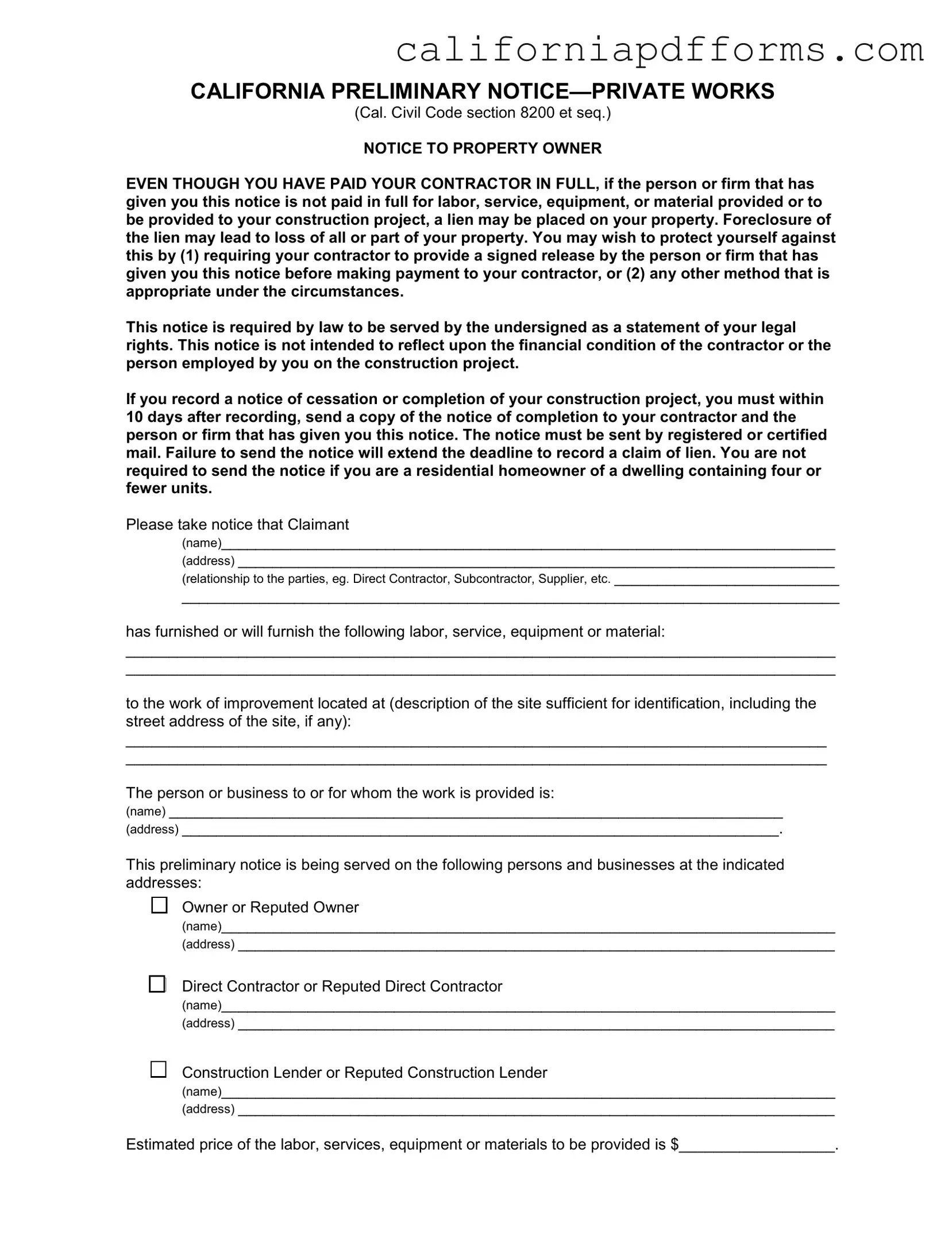Download California Preliminary Notice Private Works Form
The California Preliminary Notice—Private Works form is a legal document that informs property owners about their rights regarding payments for construction work. Even if a contractor has been paid in full, this notice warns that unpaid laborers or suppliers may place a lien on the property. It is essential for property owners to understand this form to protect themselves from potential financial loss.
To ensure your interests are safeguarded, consider filling out the form by clicking the button below.
Open Your Form Online
